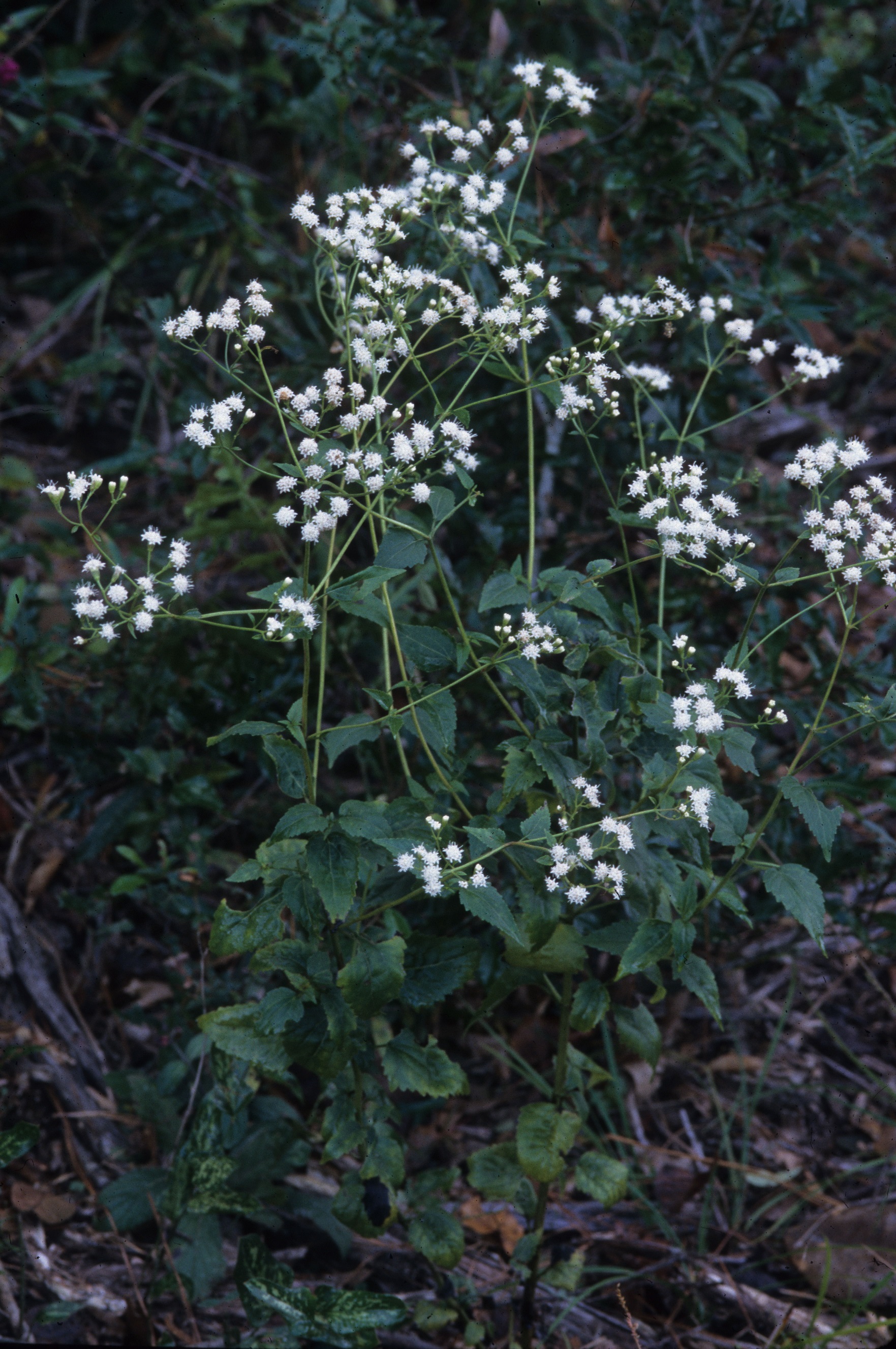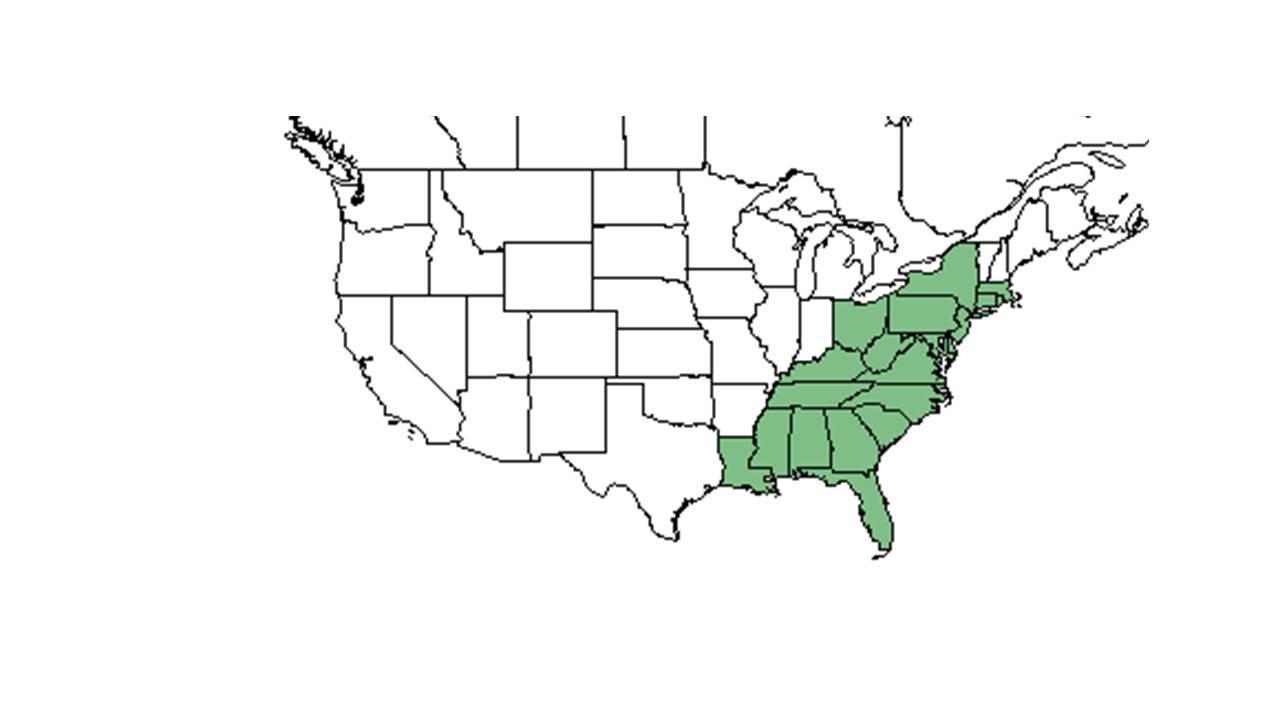Difference between revisions of "Ageratina aromatica"
(→Description) |
|||
| Line 24: | Line 24: | ||
==Description== | ==Description== | ||
<!-- Basic life history facts such as annual/perrenial, monoecious/dioecious, root morphology, seed type, etc. --> | <!-- Basic life history facts such as annual/perrenial, monoecious/dioecious, root morphology, seed type, etc. --> | ||
| − | + | A description of ''Ageratina aromatica'' is provided in [http://www.efloras.org/florataxon.aspx?flora_id=1&taxon_id=220000320 The Flora of North America]. | |
''Ageratina aromatica'' is a perennial (Hall 1993). | ''Ageratina aromatica'' is a perennial (Hall 1993). | ||
Revision as of 13:58, 11 August 2015
| Ageratina aromatica | |
|---|---|

| |
| Photo taken by Gil Nelson | |
| Scientific classification | |
| Kingdom: | Plantae |
| Division: | Magnoliophyta - Flowering plants |
| Class: | Magnoliopsida - Dicotyledons |
| Order: | Asterales |
| Family: | Asteraceae ⁄ Compositae |
| Genus: | Ageratina |
| Species: | A. aromatica |
| Binomial name | |
| Ageratina aromatica (L.) Spach | |

| |
| Natural range of Ageratina aromatica from USDA NRCS Plants Database. | |
Common names: Lesser snakeroot; Wild hoarhound
Synonym: Eupatorium aromaticum L.
Contents
Description
A description of Ageratina aromatica is provided in The Flora of North America.
Ageratina aromatica is a perennial (Hall 1993).
Distribution
It is infrequent in west Florida. It is found west to Mississippi, east towards Pennsylvania and Massachusetts (Hall 1993).
Ecology
Habitat
Ageratina aromatica is found in annually burned savannas and annually burned pinelands in poorly drained situations (FSU Herbarium). In addition, it grows in longleaf pine-wiregrass flatwoods and open longleaf pine-scrub-oak-wiregrass savannas, mixed pine-hardwood forests, open oak woods, live oak woodlands, longleaf pine sand ridges, upland woodlands, and rolling red hills (FSU Herbarium). Ageratina aromatica can also be found in disturbed habitat such as roadsides, along fences, and on the edges of fields (FSU Herbarium). This species is observed in a range of shade conditions, from open forest situations to semi-shaded and shady areas (FSU Herbarium). It occurs most frequently in moist sandy loam, dry sand, and areas of lime rock (FSU Herbarium).
Phenology
This species flowers in the fall (Wunderlin and Hansen 2003). It has been observed flowering and fruiting in October and November in particular (FSU Herbarium).
Seed dispersal
Seed bank and germination
Fire ecology
Pollination
Use by animals
Diseases and parasites
Conservation and Management
Cultivation and restoration
Photo Gallery
References and notes
Florida State University Robert K. Godfrey Herbarium database. URL: http://herbarium.bio.fsu.edu. Last accessed: June 2014. Collectors: Loran C. Anderson, Robert Blaisdell, Andre F. Clewell, William B. Fox, J. P. Gillespie, Robert K. Godfrey, C. Jackson, Gary R. Knight, R. Komarek, Robert Kral, Robert L. Lazor, Sidney McDaniel, Richard S. Mitchell, P. L. Redfearn Jr., V. I. Sullivan, Jean W. Wooten, and Geo. Wilder MacClendons. States and Counties: Florida: Bay, Calhoun, Escambia, Franklin, Gadsden, Gulf, Holmes, Jackson, Jefferson, Leon, Levy, Liberty, Madison, Okaloosa, Putnam, Santa Rosa, St. Johns, and Wakulla. Georgia: Grady.
Hall, David W. Illustrated Plants of Florida and the Coastal Plain: based on the collections of Leland and Lucy Baltzell. 1993. A Maupin House Book. Gainesville. 100. Print.
Wunderlin, Richard P. and Bruce F. Hansen. Guide to the Vascular Plants of Florida. Second edition. 2003. University Press of Florida: Gainesville/Tallahassee/Tampa/Boca Raton/Pensacola/Orlando/Miami/Jacksonville/Ft. Myers. 295. Print.